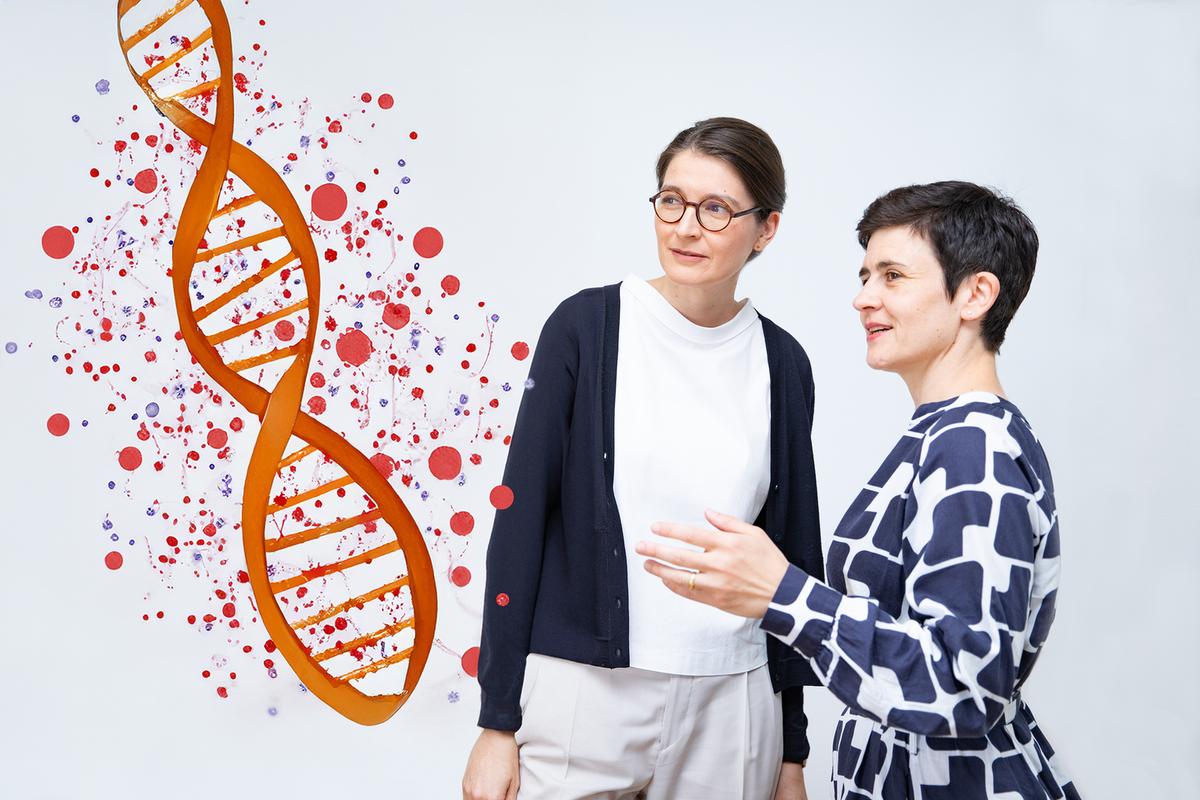MHH project aims to bring genetic diagnostics and counselling for relatives of unexpectedly deceased children and adolescents into standard care.

Dr Corinna Hendrich (left) and Professor Dr Anke Bergmann want to use genetic diagnostics to find unclear causes for the death of deceased children and adolescents. Copyright: Karin Kaiser/MHH/Photoshop-KI generated
When a child dies from an unknown cause of death, parents, siblings and relatives are burdened not only by the pain of the loss but also by the uncertainty. For example, the question remains as to whether the child died from a hereditary cause that could also affect close relatives. This uncertainty is usually associated with a high level of psychological stress for the bereaved, but can also mean potentially fatal risks for them or question further family planning. In Germany, however, the medical consequences often fall by the wayside. This is because the unclear causes of death are rarely recorded in this country and are usually not further investigated diagnostically. The reasons for this are a lack of care structures and staff shortages, and the services are not paid for by health insurance companies.
A team led by Professor Dr Anke Bergmann, Vice Director of the Institute of Human Genetics at Hannover Medical School (MHH), now wants to close this gap in care. “We want to create opportunities to provide interdisciplinary care for families of deceased children,” says the geneticist. A molecular genetic examination will first clarify whether there are hereditary causes for the unexpected death. This usually concerns rare diseases such as immunodeficiencies, neurological diseases or cardiovascular problems that were not known during the child's lifetime. Professor Bergmann and her team also want to strengthen further psychological and clinical care for relatives. The Appenrodt Foundation, based in Hannover, is supporting this project with 50,000 euros for an initial period of one year.
Developing a standardised procedure
“There are no recommendations for action or regulated procedures in this country as to how exactly and to what extent such tests should be carried out,” Professor Bergmann notes. This starts with the storage of blood or tissue samples. While every emergency ambulance in the UK, for example, carries a kit for taking material in the event of an unclear death, few physicians in Germany are aware of the consequences of clarifying a possible genetic cause for the family.
“We need nationwide care structures so that further genetic clarification of the cause of death, the subsequent genetic examination and counselling of relatives as well as psychosocial support are included in standard care.” This would require interdisciplinary cooperation, including neonatology, paediatrics, pathology, forensic medicine, human genetics, emergency services, the police, the public prosecutor's office, psychology and psychotherapy in addition to the physicians providing clinical care.
Post-mortem genetic diagnostics as prevention
“We need to rethink this together, because genetic diagnostics not only clarifies the cause of death, but can also be a life-saving preventative measure,” emphasises Dr Corinna Hendrich, a physician at the Institute of Human Genetics. The physicians have already proven this. “In one case, for example, we discovered the genetic predisposition for life-threatening cardiac arrhythmia in a young person who was apparently completely healthy and suddenly died,” says Dr Hendrich. This genetic change was also found in the mother of the deceased, who is now receiving cardiological care as a result.
In the current project, the researchers have so far found genetic causes in every second case that were partly responsible for the death of the children or adolescents examined.
The project is being carried out in collaboration with the MHH Paediatric Clinic, the MHH Institutes of Pathology and Forensic Medicine, the Children's Hospital auf der Bult in Hannover, the Children's Hospital of the LMU Munich, the University Medical Centre Mainz, the University Medical Centre Frankfurt and the University Medical Centre Hamburg-Eppendorf.
Text: Kirsten Pötzke